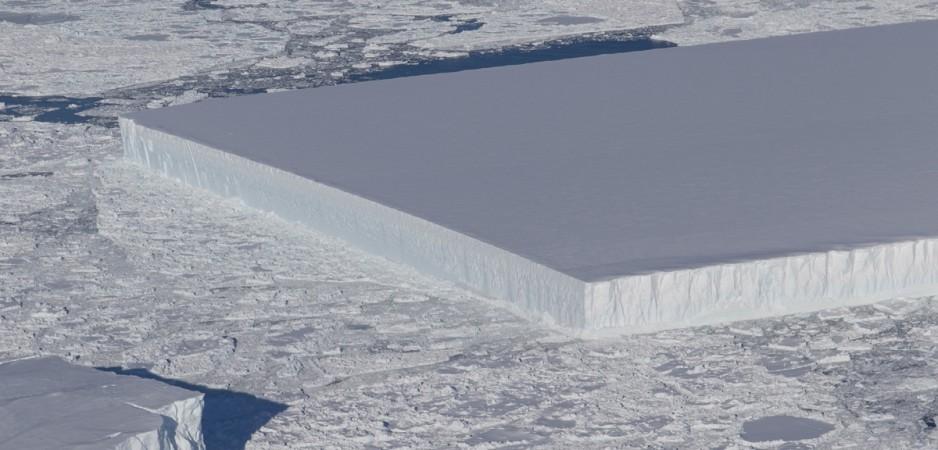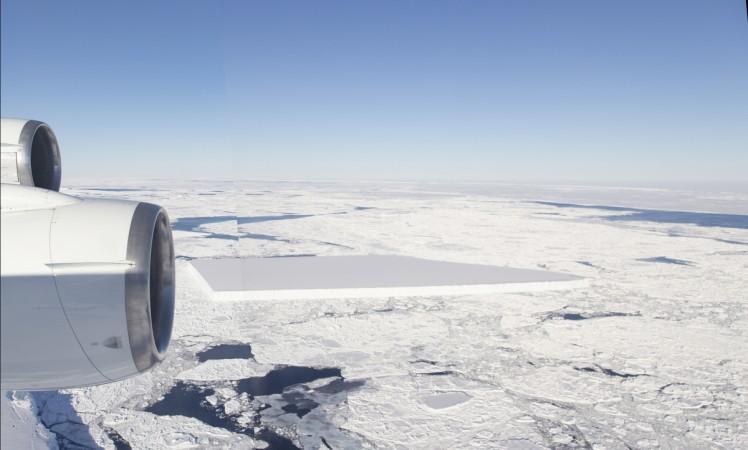
NASA started this year's Operation IceBridge in October and some of the images show not just the majesty of southern polar ice, but also some of the rather strange and bizarre shapes that icebergs can take. While most people picture icebergs as sharp, pointed hill-like structures with most of its mass underwater. Icebergs, especially the large ones can simply remain like a slab of ice, mirroring the ice sheets from where they come.
One such iceberg that NASA found this year looks suspiciously fake in that it looks like perfectly cut out piece of white, frosted cake. "I thought it was pretty interesting; I often see icebergs with relatively straight edges, but I've not really seen one before with two corners at such right angles like this one had," said IceBridge senior support scientist Jeremy Harbeck.

Operation IceBridge is the agency's longest-running aerial survey of both the north and south polar ice. Right now, the mission is surveying the southern ice, notes a release put out by NASA. Covering the northern Antarctic Peninsula, the survey was created to study the changes in ice height on glaciers that drain into Larsen A, B and C embayments.
Harbeck was the one who spotted this flat-topped, sharp-angled, iceberg floating off Larsen C ice shelf, notes the report.
The rectangular iceberg itself seems to be freshly calved from Larsen C. This is the same ice sheet from which broke a massive, trillion-ton A 68 iceberg.
"I was actually more interested in capturing the A68 iceberg that we were about to fly over, but I thought this rectangular iceberg was visually interesting and fairly photogenic, so on a lark, I just took a couple photos," Harbeck said.
















